A typical street in Kolkata, India.
Ostensibly I was in Kolkata because it was a connecting point to the tea regions of Darjeeling and Assam. In addition there was a small tea convention going on there. Also, it was my first chance to visit a famous Indian city.
First, the tea convention. For the record, it was the 2nd India International Tea & Coffee Expo. To a large degree it was a bust, at least for me. It was very small, only its second year. It didn’t really have a clear idea of whom it was addressing: importers, growers, packers, retailers, exporters or whom? It was mostly for Indian tea companies, as opposed to foreigners. I was a bit of an oddity (I’m used to that). There were lots of tea garden equipment manufacturers (which was way cool), a few actual tea companies, the official tea boards of India, Darjeeling, Assam Nilgiri, and Kangra- and these were all great contacts for me to make.
Geek warning: possibly the coolest part of the convention was the tea garden equipment manufacturers. Most of you probably know almost all of the tea TeaSource sells is still hand-plucked (2 leaves & a bud).
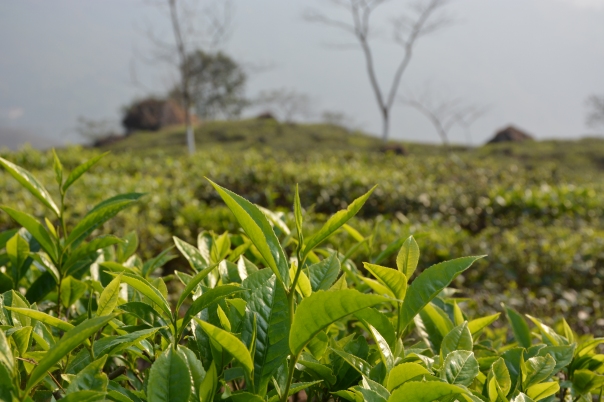
But there are some areas in the world that use machines to pluck tea leaves, particularly Japan. They do this because they don’t have enough skilled labor to go in the tea fields and pluck tea leaves. In fact the Japanese have almost made an art form of creating machinery that delivers a very high quality tea, while reducing the actual labor costs in producing these very high quality teas.
Here is a one person tea plucking machine pic from a catalog.
Here’s an actual one man machine.
Here is a two person tea plucking machine pic from a catalog.
Here is a picture of an actual 2 man machine. The handles fold out flat, so they can each be grabbed a tea worker.
These plucking machines are guided across the very top of the tea rows, which shaves the top very few leaves of the plant and collects them. However, this machine is certainly not as discriminating in choosing and plucking, ‘just the right leaves’ as a skilled tea plucker. This lesser degree of discrimination has led the Japanese to create another very cool machine: an electronic/digital tea leaf sorter that works by detecting the variations in the color of the individual leaves.
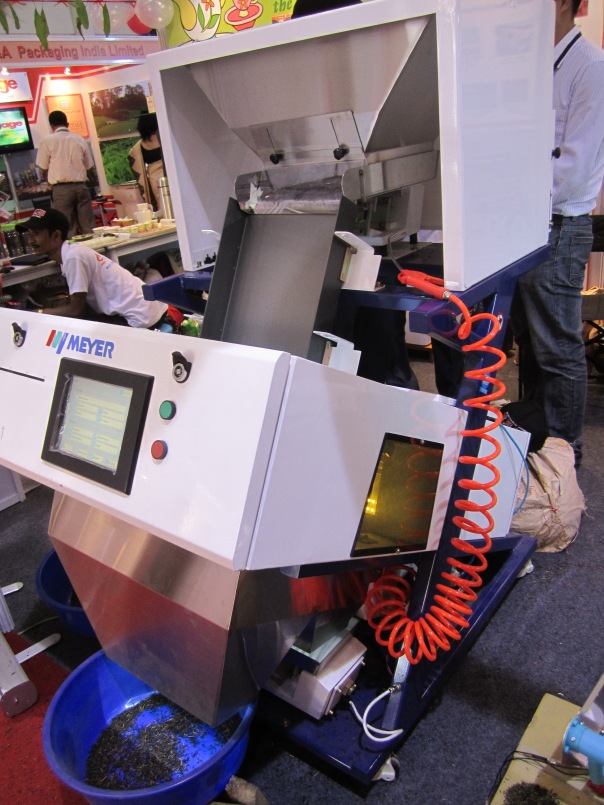
A very large color tea leaf sorter, complete with Nikon lenses on its cameras - it can sort about 800 lbs. of tea per hour.[/caption] This is pretty cool stuff; kind of Star Wars meets tea manufacturing. For better or worse, we will be seeing more of this kind of the thing in the future, as shortage of labor is the second biggest challenge facing all tea manufacturers.
But as I said, the tea convention was a bit of a bust: I made some good contacts, saw some cool machines (and since it was a slow convention I had a chance to sit and chat with the guys who design and build these machines). But that was about it. The nicest thing about the convention was it gave me an extra day to explore Kolkata.
Much more on Kolkata in the next post. -Bill
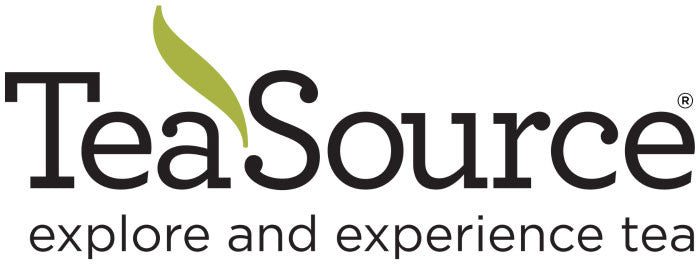

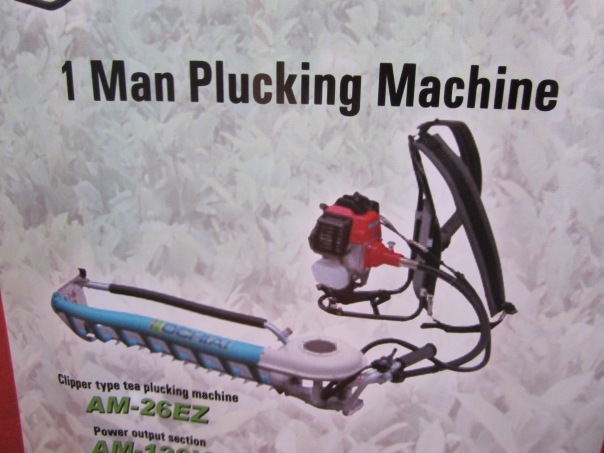


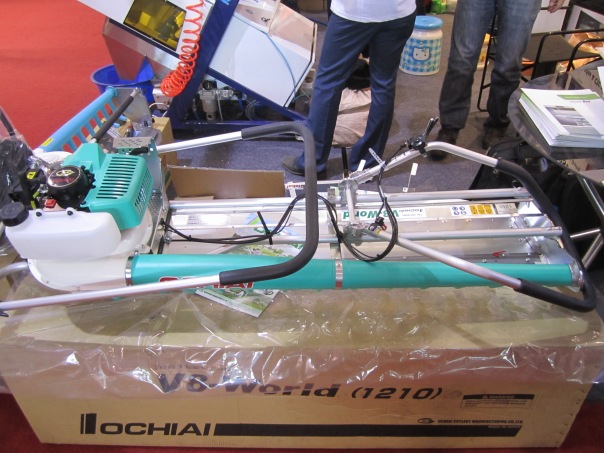

Comments
Tea plucking machines? Crazy. I live in the Midwest, so I am familiar with detasseling and the huge machines and armies of humans that take on that task here. It makes sense the same technology could be used for tea, but it had never occurred to me.
I’m curious how the one man tea plucker works…
The predominant reason that shortage of labor in tea fields is a big problem is that young people don’t want to stay home and work on a farm. I am being the tiniest bit facetious, but really not much at all. It is exactly the same phenomena that is leading to the passing away of family farms throughout the U.S.— life and work in the big city (whether that is Kolkata or Minneapolis) seems much more attractive and exciting than working on the family soybean farm, or in the local tea garden.
There is a secondary reason, according to tea garden managers I spoke to on this latest visit; a laborer in some factory in Kolkata might initially make a little higher wage than working in a tea garden. But when you are working on a tea garden you are also provided free housing, day care and/or school for your kids, an on-site clinic/medical care, a plot of land to grow food, a basic food subsidy, sometimes additional benefits. But according to tea garden managers I spoke to, people often lose sight of these other benefits when they simply see a greater amount of cash up-front. So a lot of laborers end up migrating to the big cities.